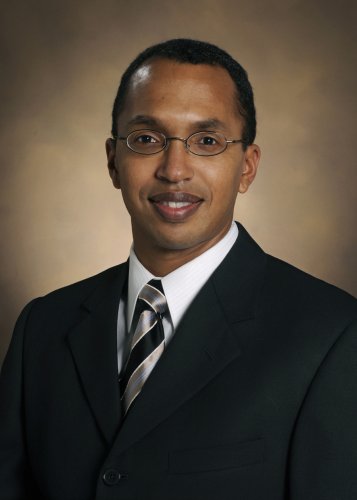Split-liver transplant is Vanderbilt’s first
Vanderbilt Medical Center recently performed its first split-liver transplant, where one organ is transplanted into two separate recipients.
A split-liver transplant is not new technology, but one that is recognized as a useful tool when both a pediatric patient and small adult recipient are available.
Since the launch of the pediatric liver transplantation program at the Monroe Carell Jr Children's Hospital at Vanderbilt in 2007, a goal has been to expand transplant options to offer organs to those children who have few opportunities for whole-organ grafts due to size limitations.

Beau Kelly, M.D.

Kelly Wright, M.D.
“With this kind of split transplant, one patient must take priority and that is the person to whom the liver is primarily offered,” said Kelly Wright, M.D., chief of the Division of Hepatobiliary Surgery and Liver Transplantation.
“In this case, the pediatric patient needed to get a useable portion of the liver no matter what, and if there is an adult candidate willing to take the remaining portion of the liver, then that is great.
“Now what was remarkable was that the remaining piece was of sufficient quality and size for our adult patient. Everything just fell together in this case,” said Wright, surgical director of the Liver Transplant Program.
Vanderbilt's Beau Kelly, M.D., surgical director of the pediatric liver transplantation program, said once he realized he would need only 30 percent of the donor liver, he began working on locating a suitable adult recipient for the remaining 70 percent.
“Once we were approved to share the organ between two patients, I called the potential adult recipient and asked if she was OK with the idea,” said Kelly.
“It was a rare opportunity to help two individuals with one donor liver. The adult recipient was very excited about the opportunity. And she was very courageous to agree to this procedure.
“It was amazing that we had a suitable donor organ that was appropriate for our primary recipient as well as an additional candidate. It was imperative that the portion left over would be enough to sustain the adult patient — and it was.”
Kelly coordinated both surgeries, one at Vanderbilt University Hospital, the other at Children's Hospital. It was Kelly's responsibility to ensure the organ was properly dissected and viable for transplantation as well.
“After recovering the organ, I had to prep both portions of the liver and reconstruct them for transplant,” Kelly said.
“I had to make sure all the appropriate vascular and bile duct structures accompanied both portions of the liver.”
The left portion of the liver was transplanted into the pediatric patient, who had been on the waiting list for more than three months after a diagnosis of Biliary Atresia, a congenital absence of bile ducts in the liver.
This condition blocks bile flow from the liver to the gallbladder. A surgical procedure can often repair the bile duct obstruction, but in cases where it is not successful, transplantation is the only treatment option to ensure survival. Derek Moore, M.D., assistant professor of Surgery, assisted Kelly in the transplant of the pediatric recipient.
The remaining, larger portion of the liver was transplanted into a woman diagnosed with cirrhosis from chronic hepatitis. Wright, along with Sunil Geevarghese, M.D., assistant professor of Surgery, performed the adult transplant operation.
Both patients have been released from the hospital with good early-graft function, an indicator of the two transplant successes.
Traditionally, transplant programs would perform a reduced-size graft procedure when transplanting a liver into a pediatric patient.
This means the organ would be cut to the appropriate size for the intended recipient and the other portion of the donor liver would be discarded.
Split-liver transplantations, like the one in this case, are generally applicable in pediatric cases and often are not suitable in adult-only procedures, according to Wright.
For Kelly the magnitude of the transplant did not set in until after well after the milestone took place.
“I didn't have time to think about the ramifications. It wasn't until I got home that it hit me; what we were able to accomplish,” Kelly said.
“When I think about the pioneers in transplant and what they must have felt when they did their firsts…we accomplished a first and we will continue to build on that. We have an amazing and capable team of individuals at Vanderbilt.”













